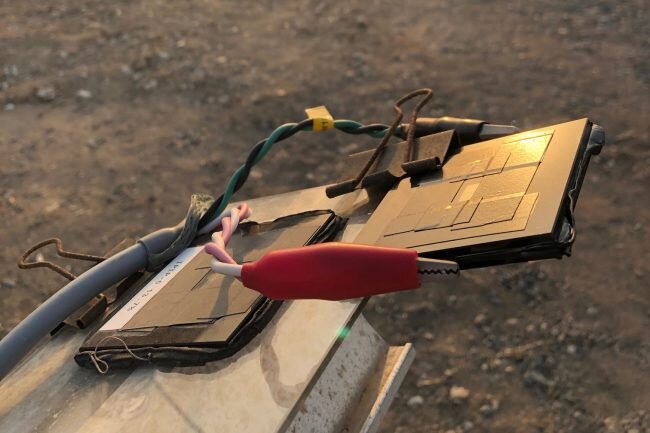To increase the performance of solar panels, an international collaboration—including researchers from King Abdullah University of Science & Technology (KAUST) and U of T Engineering—has created a bifacial, or two-sided, tandem solar cell, built by bringing together the best of the perovskite and silicon technologies.
Out in the field, light primarily comes directly from the sun. Conventional tandem solar cells can already convert this light into electricity more efficiently compared to traditional silicon-only solar cells by absorbing additional wavelengths of light.
Now, the researchers have realized that even more energy can be gathered using a two-sided tandem configuration. Light reflected and scattered from the ground—referred to as “albedo”—can also be collected to significantly increase the current of a tandem solar cell.
The research, which was published today in the journal Nature Energy, outlines exactly how the team engineered the perovskite/silicon device to exceed the currently accepted performance limits for the tandem configuration.
“By exploiting the albedo, we can now generate currents higher than in conventional tandems, without increasing the manufacturing costs at all,” said Dr. Michele De Bastiani, the co-lead author of this study. The study’s authors include University Professor Ted Sargent (ECE) and ECE postdoctoral fellow Yi Hou.
The potential for capturing indirect sunlight has been studied in the past, but without experimental verification. In addition to U of T Engineering, KAUST researchers worked with collaborators from the Karlsruhe Institute of Technology, and the University of Bologna to solve the scientific and engineering challenges required to include indirect sunlight in the energy gathering capacity of their modules.
With this knowledge at hand, they tested the bifacial tandem solar cell in outdoor conditions, achieving efficiencies beyond any commercial silicon solar panel.
“Bifacial silicon-only solar cells are rapidly taken an increasing share in the photovoltaics market, as they can lead to a performance gain of 20% relative. Exploiting this concept in perovskite/silicon tandems now opens opportunities for ultra-high power generation at affordable cost” concluded Professor Stefaan De Wolf (KAUST).
Tandem devices feel the heat
More information:
Michele De Bastiani et al. Efficient bifacial monolithic perovskite/silicon tandem solar cells via bandgap engineering, Nature Energy (2021). DOI: 10.1038/s41560-020-00756-8
Provided by
University of Toronto
Citation:
Two-sided solar cells can collect scattered light to gather more energy (2021, January 12)
retrieved 13 January 2021
from https://techxplore.com/news/2021-01-two-sided-solar-cells-energy.html
This document is subject to copyright. Apart from any fair dealing for the purpose of private study or research, no
part may be reproduced without the written permission. The content is provided for information purposes only.



